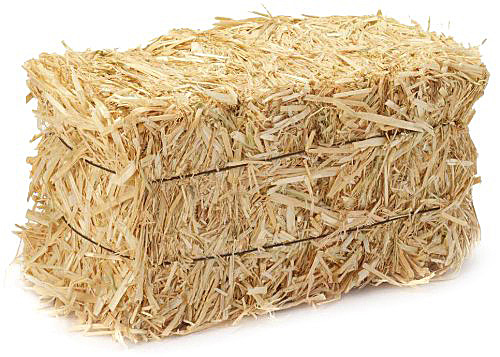designed for the way women work.

Garden Words You Should Know Starting With Hay versus Straw
Category: Flower Gardens, Plant Ideas & Info, Presenting "The Curious Gardener", Spring Projects
Hay versus straw
Hay is grown as food for livestock. If you buy hay for your garden you will have seed heads that can sprout and create weeds. I learned this the hard way one year when I sprinkled hay over a newly seeded part of our lawn and large weeds emerged that were hard to pull out.
Straw makes a great mulch and planting bed for your garden. It has no nutritional value for animals because it’s made of the plant stalk with the seed head removed, leaving a hollow tube. (Think of a drinking ‘straw’ that is hollow.) Straw and hay are sometimes packaged up identically (in bales), so it’s best to inquire or visually inspect the bales for seed heads yourself.
If you want to avoid pesticides in your garden ask if the hay was organically grown.
There is a lot of information available on planting a raised garden in a bale of straw. I may try it this year.
Compost versus mulch
These words are often used interchangeably, but their purpose is quite different. While compost can take the place of mulch, mulch shouldn’t take the place of compost. Confused?
Compost is organic matter in various stages of decomposition. Its purpose is to provide plant nutrients to the soil and improve the soil texture. It can be thought of as an organic fertilizer.
Mulch is any material, organic or inorganic, whose purpose is to cover the soil in order to suppress weeds, retain moisture and keep the ground around the plant insullated from heat and cold.
Old wood versus new wood
These are terms that most often apply to deciduous shrubs that shed their leaves and go dormant in the winter months. Some shrubs bloom on last year’s stems, which is called old wood. This is the case with lilac, forsythia and some hydrangeas. I have a very fragrant viburnum carlesii outside my kitchen that blooms on old wood too. If you cut them back in the spring before they bloom you will remove their future blooms. Instead, it’s best to cut them after they bloom so they have the rest of the season to set new buds and prepare for next year’s bloom.
Some shrubs bloom on new wood, which is new growth that emerges in spring. For these shrubs it’s best to trim back stems in very early spring to encourage growth and more blooms later in the season. Spirea and caryopteris are in this category.
As a rule of thumb, many early spring flowering shrubs bloom on old wood and many summer flowering shrubs bloom on new wood.
Pinching plants
When you pinch a plant, you are removing the main stem, forcing the plant to grow two new stems from the leaf nodes below the pinch or cut. This encourages branching that will eventually yield more fruit or flowers. It also prevents the plant from getting too leggy so you’ll have a stronger central stem. If you’re growing plants for their leaves, such as herbs, regular pinching prevents them from going to seed too soon.
Avoid damaging the new leaf nodes below the place where you are pinching. Using a Plant Snip or needle nose Garden Shear helps. Be sure the plant is strong enough and has enough growth to withstand the pinching.
Synthetic fertilizer versus organic fertilizer
Here’s a definition from Oregon State U. It’s a more complicated topic than we have the space to cover here, but here’s some food for thought:
Organic fertilizers such as manures, compost or bone meal are derived directly from plant or animal sources, according to Ross Penhallegon, horticulturist with the Oregon State University Extension Service. Inorganic fertilizers such as ammonium sulfate or ammonium phosphate are often called commercial or synthetic fertilizers because they go through a manufacturing process, although many of them come from naturally occurring mineral deposits.
Synthetic fertilizers are often more water soluble. I use Miracle Gro on houseplants, but I don’t use it outdoors in my garden. I have cut back on using fertilizers on the advice of expert gardeners who help me with my garden. The goal is to put the right plant in the right spot and leave the rest to nature, which includes letting organic matter decompose slowly in the garden, and top dressing with compost, feeding the plants that way.



Excellent info, look forward to more! I especially liked old wood new wood-I have to monitor closely my husband’s activity when I see him with trimmers/shears!
very well written. Great and accurate info. I look forward to next “word”
Martha Stewart,
Dirt is what we sweep up off the floor. Soil is a living organism containing thousands if not millions of organism per cubic inch. My Horticulture professor would correct you if you called the growing medium DIRT.